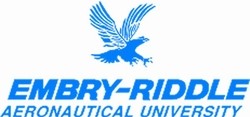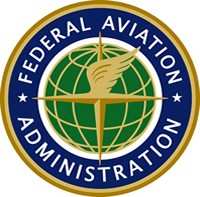ERAU Grads Must Fly 1,000 Hours, Can Acquire Restricted ATP Certificate Earlier With Full-Motion Sim Training
A new rule recently announced by the FAA increases qualification requirements for first officers who fly for U.S. passenger and cargo airlines, but includes allowances for reduced hours for pilots holding Bachelor’s degrees from Embry-Riddle Aeronautical University’s Daytona Beach, FL, and Prescott, AZ, campuses. Students at Embry-Riddle also have another advantage – access to full-motion simulation training like no other university in the United States.

The rule requires first officers – also known as co-pilots – to hold an Airline Transport Pilot (ATP) certificate, requiring 1,500 hours total time as a pilot. Previously, first officers were required to have only a commercial pilot certificate, which requires 250 hours of flight time. Under the FAA’s new rule, students at aviation degree-granting four-year universities like Embry-Riddle would have to accumulate 1,000 flight hours rather than the 1,500 to qualify for the ATP license.
“This is the FAA’s recognition of the excellent pilot education programs and high quality standards that universities like Embry-Riddle have demonstrated,” said Dr. Tim Brady, Dean of the College of Aviation at Embry-Riddle’s Daytona Beach Campus. “This will provide our graduates with about a year’s early hiring advantage relative to those who will need to acquire the 1,500 hours.”
To be hired by the airlines, candidates will need both the ATP license and an airline aircraft type rating. Embry-Riddle graduates will be able to meet each of these training requirements with their access to full-flight simulation. They will also be able to obtain the license at 21 years old rather than the 23 years of age normally required. A full-motion simulator for the CRJ-200 aircraft has been installed in the Daytona Beach Campus’ Advanced Flight Simulation Center and will be certified by early August. Students at the Prescott Campus will continue to use a long-standing contract with a Phoenix-based pilot training center to train in full-motion simulators alongside airline crews.

The simulators replicate the cockpit and instrumentation of a regional airline jet and enable students to safely train for operations in realistic, difficult conditions, such as adverse weather. Training in a full-motion simulator ensures that students attain a significant amount of experience in a multi-crew environment while operating in difficult conditions.
The Airline Safety and Federal Aviation Administration Extension Act of 2010 mandates all airline pilots to have an ATP license that requires 1,500 hours of flight time, including cross-country, night and instrument flying and completion of a training course. Embry-Riddle also has designed a course to maximize training in simulators to meet the new FAA requirements of 1,000 hours rather than 1,500.
“As the leader in aviation education, Embry-Riddle plays a key role in obtaining recognition for the four-year aviation degree programs and has been preparing for this ruling for more than two years,” said Dr. Frank Ayers, Chancellor at Embry-Riddle’s Prescott, AZ, campus. “We’ve developed programs at our campuses in Prescott and Daytona Beach with high-level training in full-motion simulation and detailed jet education that clears a path for students to gain the required flight hours as working flight instructors while finishing their undergraduate degree and speeding their transition from student to airline pilot.”
 Senator Pushes FAA to Accelerate Rocket Launch Licensing
Senator Pushes FAA to Accelerate Rocket Launch Licensing Classic Aero-TV: RJ Gritter - Part of Aviations Bright New Future
Classic Aero-TV: RJ Gritter - Part of Aviations Bright New Future Aero-FAQ: Dave Juwel's Aviation Marketing Stories -- ITBOA BNITBOB
Aero-FAQ: Dave Juwel's Aviation Marketing Stories -- ITBOA BNITBOB ANN's Daily Aero-Linx (10.27.24)
ANN's Daily Aero-Linx (10.27.24) ANN's Daily Aero-Term (10.27.24): Clearance Void If Not Off By (Time)
ANN's Daily Aero-Term (10.27.24): Clearance Void If Not Off By (Time)




